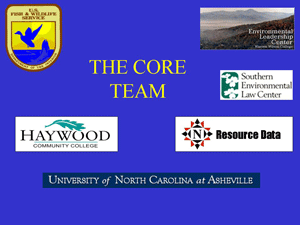GREAT LEARNING OPPORTUNITY --- BIOFUELS FORUM
The Land of Sky Clean Vehicles Coalition, Haywood County Soil and Water Conservation District and NC Department of Agriculture and Consumer Services are sponsoring an exciting forum entitled “Biofuels In Haywood County: A forum for potential users of biofuels”. The free program addresses the many questions of biofuel use in Haywood County. The Haywood Biofuels Forum is Friday, December 8, 2006, 1:00 to 3:30 p.m. in the downstairs auditorium at the Haywood County Agricultural Agency Center at 589 Raccoon Rd. in Waynesville, NC. Fleet mangers, school officials, farmers, and the public are invited to join with biofuel experts and local, state and federal government representatives at the Biofuels in Haywood County Forum. Financial support for the Forum is being provided by the State Energy Office.
 Topics include an Overview of the Advantages and Statewide Status of Biofuels; Experiences with Biodiesel in fleets and equipment; Benefits to Farmers using Biofuels; Commercial Availability and Costs of Biofuels; and The Clean Cities Program and other Funding and Technical Assistance Programs. Special Guest Speaker will be NC Commissioner of Agriculture Steve Troxler.
Topics include an Overview of the Advantages and Statewide Status of Biofuels; Experiences with Biodiesel in fleets and equipment; Benefits to Farmers using Biofuels; Commercial Availability and Costs of Biofuels; and The Clean Cities Program and other Funding and Technical Assistance Programs. Special Guest Speaker will be NC Commissioner of Agriculture Steve Troxler.Use of biofuels in North Carolina and across the nation is increasing. Biodiesel, a mixture of petroleum diesel and biologically derived diesel fuel, is available at some commercial gas stations or by delivery from biofuels distributors in the region. Biodiesel is commonly derived from soybeans or recycled restaurant grease. Although the fuel can be burned in a pure form (B100), most often it is mixed with petroleum diesel to provide B20 (20% biodiesel/80% petroleum diesel). Most diesel vehicles require no modifications to burn biodiesel. Another biofuel is ethanol blended with gasoline. The ethanol is derived from corn and added to gasoline to provide a product such as E10 that is 10% ethanol or E85 that is 85% ethanol. E10 can be used in any gasoline burning engine and E85 can be used in “flex fuel vehicles” provided by some major vehicle manufacturers at little or no additional cost.
Interest in biofuels in the US is shared by farmers, consumers, conservationists and entrepreneurs as well as many others who recognize the importance of national goals to reduce dependence on foreign oil and improve air quality. Some school systems have begun using biodiesel to reduce the hazards of exposing school children to the toxic emissions of petroleum diesel. Biofuels also present local opportunities for economic development.
To register or for additional information, please call Bill Eaker with the Land of Sky Clean Vehicles Coalition at 828-251-6622 or Gail Heathman with the Haywood Soil and Water Conservation District at 828-452-2741 (Extension 3).


